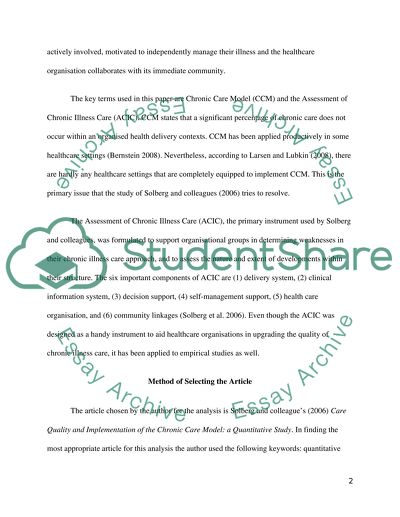Cite this document
(“Care Quality and Implementation of the Chronic Care Model Essay”, n.d.)
Retrieved de https://studentshare.org/nursing/1390421-research-critique
Retrieved de https://studentshare.org/nursing/1390421-research-critique
(Care Quality and Implementation of the Chronic Care Model Essay)
https://studentshare.org/nursing/1390421-research-critique.
https://studentshare.org/nursing/1390421-research-critique.
“Care Quality and Implementation of the Chronic Care Model Essay”, n.d. https://studentshare.org/nursing/1390421-research-critique.


